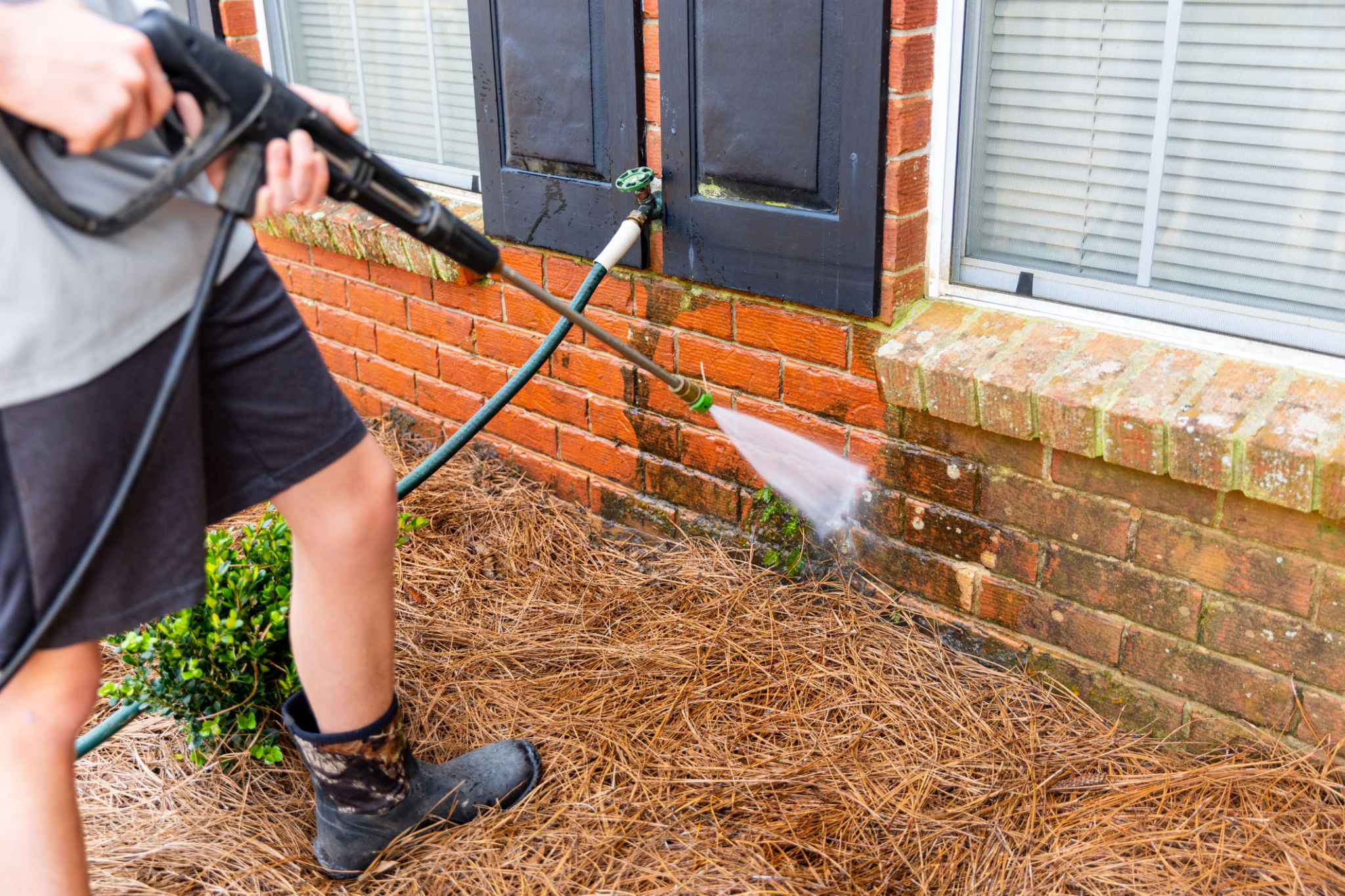Top Power Washing Techniques for Different Surfaces
Understanding Power Washing Basics
Power washing is an effective way to clean various surfaces, but it's crucial to understand the different techniques required for each type of material. The pressure and type of cleaning solution used can vary significantly, ensuring that the surface is cleaned without causing damage. It's essential to know which method is suitable for the task at hand to achieve optimal results.
Before starting any power washing project, assess the surface type and its condition. This initial evaluation will guide you in selecting the proper nozzle and pressure settings, as well as deciding if a cleaning agent is necessary. Remember, not all surfaces can handle high pressure, and improper use can lead to costly repairs.

Power Washing Techniques for Concrete Surfaces
Concrete surfaces such as driveways and sidewalks benefit greatly from power washing. The key is to use a pressure washer with a high PSI (pounds per square inch) rating, generally between 3000 to 4000 PSI. This level of pressure effectively removes dirt, grime, and stains.
When cleaning concrete, it's advisable to use a surface cleaner attachment. This tool ensures even pressure distribution and prevents streaks. Always start from the highest point if you're working on a sloped surface to avoid water pooling. A mild detergent can be used for stubborn stains, followed by a thorough rinse to prevent residue buildup.

Cleaning Wooden Decks with Care
Wooden decks require a gentler approach compared to concrete. Using too much pressure can splinter wood or strip away its finish. Typically, a setting between 500 and 600 PSI is sufficient for most wood surfaces. Additionally, selecting a fan tip nozzle helps distribute water evenly, protecting the wood's integrity.
If your deck shows signs of mildew or algae, consider applying a wood-friendly cleaning solution before power washing. Let the solution sit for a few minutes to break down the growth, then gently wash it away. Always follow up with a sealant after the deck dries to protect the wood from future damage.

Delicate Approach for Siding
Siding, whether vinyl or aluminum, requires cautious handling to avoid dents or water intrusion. The safest method involves using a low-pressure setting, generally around 1300 to 1600 PSI. A broad spray pattern ensures even coverage without focusing intensely on one area.
Use a siding-specific detergent to tackle any mold or mildew that might have developed over time. Apply it with a spray applicator and let it rest before rinsing off. Avoid directing water upwards or at seams to prevent water from seeping behind the siding panels.
Managing Brick and Stone Exteriors
Brick and stone exteriors are robust but still require particular attention during power washing. A medium pressure setting, around 1500 to 2000 PSI, is usually effective without risking mortar damage. Use a rotating nozzle to dislodge stubborn dirt while maintaining surface integrity.
If efflorescence (a white powdery substance) is present, an acid-based cleaner may help dissolve it. However, ensure thorough rinsing to prevent any chemical residue. For historical or aged stonework, professional consultation is recommended to preserve its structural and aesthetic value.

Essential Safety Tips
Power washing involves handling high-pressure equipment, and safety precautions are paramount. Always wear protective gear such as goggles and gloves to prevent injury from flying debris or chemical splashes. Maintain a stable stance and avoid using ladders while power washing; instead, use extension wands for hard-to-reach areas.
- Test your pressure washer on a small area first to ensure it won't damage the surface.
- Avoid pointing the nozzle at people or pets.
- Ensure electrical outlets and fixtures are protected from water exposure.
By following these guidelines and techniques, you can enhance the curb appeal of your property while maintaining its surfaces' longevity. Proper care and attention during power washing will yield impressive results without compromising safety or surface integrity.
